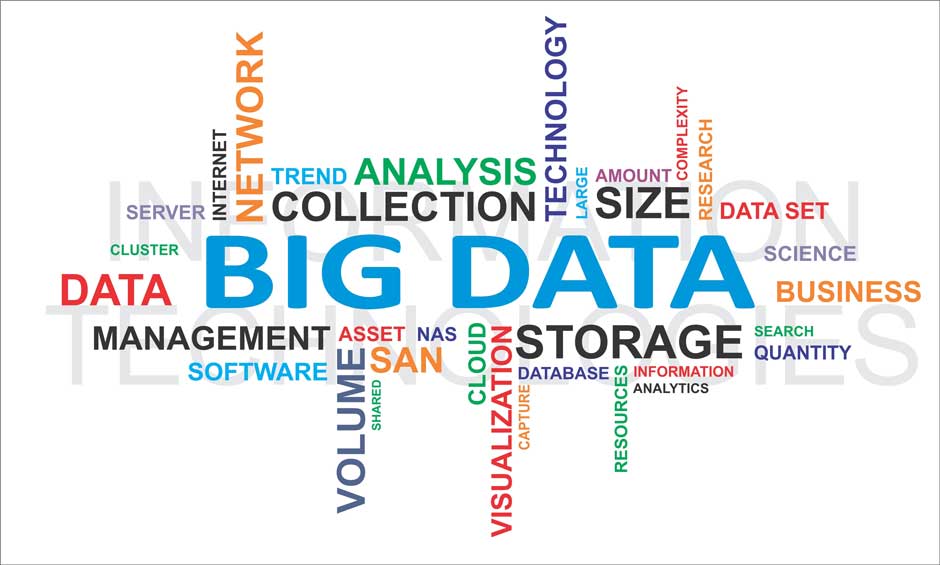Solution Engineering
The Elephant in The Room
Address Big Data. Strategize, Process, Analyze, Visualize.

In the right hands and handeled stragetically, the massive amounts of infomration enterprises collect today can become a valuable new asset. Companies seeking additional organic revenue streams should consider tapping their data trove to power a new information services growth engine.
Data Strategy
The process of developing a 'Data Strategy' for an enterprise typically starts with three simple steps:
Symptom Recognition - It usually starts as a "symptom" – the need for something more than traditional DB management tools in your enterprise. There are a standard set of activities which when performed, enable the linking of this "symptom" or a "business challenge" to your Big-data needs. Our technical team and business consulting teams liaise with your teams to understand what these symptoms are and how they could be addressed through the use of Big Data tools and processes
Data Discovery - Here we identify all elements /characteristics of data belonging to an enterprise that can qualify as big data. This is also an extremely critical step in identifying data that would make a difference to the way in which business is conducted. Often, there exists data that does not present itself as "useful" data at the outset. The same data, when analyzed in a certain context may present insights that determine the future course of your business. Hence, as the name suggests, this step also helps discover the "useful" data for a business.
Data Assessment - This step lays the platform for Data Analytics to begin. Here, the data is assessed and classified based on its structure (structured, semi structured and unstructured), quality etc. Both Subjective assessments (perceptions of the individual stakeholders involved with the data) as well as Objective assessments (based on the dataset in question) are conducted in this step.
Data Processing and Storage Infrastructure
- effective formatting to make it ready for analysis
- effective storage infrastructure that caters to all its forms and types
Data Analytics
Data Analytics in the Big Data context is typically constituted by examination of large volumes of data in real-time, to discover new data features, uncover hidden patterns, unknown correlations and draw conclusions from non-numerical data such as words, photographs or videos. Information dashboards typically present this data, supported by real-time data streams. Our team members and technologists would assist you in this activity, which would then be interpreted by statisticians and data scientists to arrive at better and insightful decisions.
Data Visualization
- Tag cloud - A weighted visual list of free form text where each word is displayed with varying font, color and emphasis, relative to the results found from data analyses.
- Clustergram - A visualization technique for cluster analysis which proves explanatory when hierarchical and non hierarchical algorithms are applied on big data.
- History flow - A time sequenced snapshots of the various stages of an artifact from the time of its creation.
- Spatial Information flow - This technique depicts spatial information flows diagrammatically. It is the quickest means to determine vicinity to particular locations in reference or the frequency and intensity of flow of information to and from these reference points.
